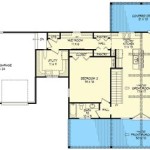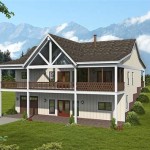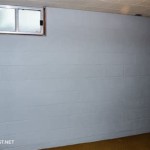Ranch Home With Walkout Basement Plans: Maximizing Space and Value
Ranch homes, characterized by their single-story layout and low-pitched roofs, are a popular housing choice for a variety of reasons, including accessibility and ease of maintenance. When coupled with a walkout basement, the functionality and versatility of a ranch home are significantly amplified. Walkout basements offer the advantage of natural light and direct access to the outdoors, transforming what might otherwise be a dark, enclosed space into a functional and desirable living area. This combination, ranch home with walkout basement, presents numerous design and lifestyle benefits that contribute to increased property value and enhanced livability. The following sections will explore the key aspects of planning a ranch home with a walkout basement, focusing on design considerations, construction factors, and potential uses for the space.
Understanding Walkout Basement Terminology and Design Principles
The term “walkout basement” refers to a basement that has at least one wall that is entirely above grade, allowing for a door or sliding glass door to lead directly to the outside. This is typically achieved when the house is built on a sloping lot, where the natural grade exposes one side of the basement. The design of a walkout basement influences several aspects of the ranch home, including its foundation, drainage, and overall aesthetic appeal. Key to successful design is understanding the site's topography and integrating the basement seamlessly with the upper level and surrounding landscape.
Grading is a critical component of walkout basement design. Proper grading directs water away from the foundation, preventing moisture problems and structural damage. A well-designed grading plan should consider the natural slope of the land, as well as the finished grade around the house. Landscaping elements, such as retaining walls and drainage swales, may be necessary to ensure effective water management. The exposed basement wall also needs to be properly insulated and weatherproofed to prevent heat loss and moisture infiltration.
The placement of windows and doors in the walkout basement is another important design consideration. Natural light significantly enhances the usability of the space and reduces reliance on artificial lighting. Large windows, such as egress windows, are not only aesthetically pleasing but also provide a means of escape in case of emergency. The door leading to the outside should be strategically positioned to maximize access to outdoor living areas, such as patios or decks. The design should also consider the orientation of the house with respect to the sun, to optimize natural light and minimize heat gain in the summer.
In terms of the interior layout, the walkout basement can be designed to accommodate a variety of functions, depending on the homeowner’s needs and preferences. Common uses include recreation rooms, home theaters, home offices, guest suites, and storage areas. The design should take into account the intended use of the space, as well as considerations such as soundproofing, insulation, and accessibility. For example, if the basement is intended to be used as a home theater, soundproofing materials should be incorporated into the walls and ceiling. Similarly, if the basement is intended to be used as a guest suite, a separate bathroom and kitchenette may be desirable.
Accessibility is also an important factor to consider when designing a walkout basement. Building codes typically require that basements have at least one egress window or door for safety reasons. In addition, the design should consider the needs of individuals with mobility limitations. This may involve incorporating features such as ramps or elevators to provide access to the basement from the upper level. The interior staircase leading to the basement should also be designed to be safe and easy to use, with adequate lighting and handrails.
The structural integrity of the ranch home with a walkout basement is paramount. A qualified structural engineer should be consulted to ensure that the foundation is properly designed to support the weight of the house and withstand the lateral pressure of the soil. The foundation walls should be constructed of durable materials, such as reinforced concrete, and they should be properly waterproofed to prevent moisture infiltration. The floor of the basement should also be properly insulated to prevent heat loss and moisture condensation.
The aesthetic design of the walkout basement should complement the overall style of the ranch home. The exterior of the exposed basement wall can be finished with a variety of materials, such as brick, stone, or siding, to match the upper level of the house. Landscaping can also be used to enhance the appearance of the basement and integrate it seamlessly with the surrounding landscape. For example, planting shrubs or flowers along the base of the exposed wall can help to soften its appearance and create a more inviting outdoor space. The interior of the basement can be finished with a variety of materials, such as drywall, paneling, or tile, to create a comfortable and inviting living space. The design should also consider the lighting and ventilation of the basement, to ensure that it is a comfortable and healthy environment.
Construction Considerations and Cost Implications
Constructing a ranch home with a walkout basement involves several unique construction considerations that impact the overall cost and timeline of the project. The type of soil, the slope of the lot, and the local building codes all play a significant role in determining the feasibility and cost of construction. Proper site preparation, foundation construction, and waterproofing are essential to ensure the long-term durability and integrity of the structure.
Site preparation is the first step in constructing a ranch home with a walkout basement. This involves clearing the land, grading the slope, and excavating the foundation. The amount of excavation required will depend on the slope of the lot and the desired depth of the basement. In some cases, significant amounts of soil may need to be removed to create a level building site. The soil should be properly compacted to ensure that it can support the weight of the house. A soil test should be conducted to determine the type of soil and its bearing capacity. This information is essential for designing the foundation and ensuring that it is structurally sound.
The foundation construction is a critical step in building a ranch home with a walkout basement. The foundation walls must be strong enough to support the weight of the house and withstand the lateral pressure of the soil. Reinforced concrete is the most common material used for foundation walls. The walls should be properly insulated to prevent heat loss and moisture condensation. The foundation should also be properly waterproofed to prevent moisture infiltration. This can be achieved by applying a waterproof coating to the exterior of the walls and installing a drainage system to collect and divert water away from the foundation.
Waterproofing is a critical aspect of walkout basement construction. Since one wall is exposed to the elements, it is essential to implement effective waterproofing measures to prevent water damage and mold growth. This includes applying a waterproof membrane to the exterior of the foundation walls, installing a drainage system to collect and divert water away from the foundation, and ensuring that all windows and doors are properly sealed. The drainage system typically consists of a perforated pipe that is buried along the base of the foundation walls. The pipe collects water and directs it to a sump pump, which pumps the water away from the house. It is important to choose a waterproofing system that is appropriate for the specific soil conditions and climate. In areas with heavy rainfall or high water tables, a more robust waterproofing system may be required.
The cost of constructing a ranch home with a walkout basement can vary significantly depending on several factors, including the size of the house, the complexity of the design, the type of materials used, and the local labor costs. In general, building a walkout basement will add to the overall cost of the project compared to a standard basement or a slab-on-grade foundation. However, the added value and functionality of the walkout basement can often outweigh the additional cost. The cost of excavation, foundation construction, and waterproofing will all contribute to the overall cost of the project. It is important to obtain detailed cost estimates from several contractors before starting construction.
Building codes and regulations also play a significant role in the construction of a ranch home with a walkout basement. Local building codes typically require that basements have at least one egress window or door for safety reasons. The size and location of the egress window or door must comply with the building code. In addition, the building code may have requirements for the insulation, ventilation, and fire safety of the basement. It is important to consult with the local building department to ensure that all building codes and regulations are followed.
The impact of a walkout basement on property taxes should also be considered. In many jurisdictions, finished basements are assessed at a higher value than unfinished basements. This can result in higher property taxes. It is important to check with the local tax assessor to determine how a walkout basement will affect property taxes.
Maximizing the Potential of a Walkout Basement Space
The versatility of a walkout basement allows homeowners to tailor the space to their specific needs and lifestyle. Transformative possibilities include creating additional living space, increasing storage capacity, and adding recreational areas, all while increasing the overall value of the home. Careful planning and design can unlock the full potential of this valuable space.
One of the most common uses for a walkout basement is to create additional living space. This can include a recreation room, a home theater, a home office, or a guest suite. The natural light and direct access to the outdoors make the walkout basement a more attractive living space than a traditional basement. The space can be designed to be comfortable and inviting, with features such as a fireplace, a wet bar, and comfortable seating. The walkout basement can also be used as a separate living area for adult children or elderly parents. This can provide privacy and independence for both the homeowner and their family members.
A walkout basement can also be used to increase storage capacity. This is especially beneficial for homeowners who have a lot of belongings or who need extra space for seasonal items. The basement can be designed with a variety of storage solutions, such as shelving units, cabinets, and storage boxes. The space can also be used to store larger items, such as furniture, appliances, and equipment. It is important to ensure that the storage area is properly ventilated to prevent moisture buildup and mold growth.
Creating a recreational area is another popular use for a walkout basement. This can include a game room, a gym, or a workshop. The possibilities are endless, depending on the homeowner’s interests and hobbies. A game room can be equipped with a pool table, a ping pong table, and other games. A gym can be equipped with exercise equipment, such as treadmills, elliptical machines, and weights. A workshop can be equipped with tools and equipment for woodworking, metalworking, or other crafts. The recreational area can be a great place to relax, exercise, and pursue hobbies.
Adding value to the home is another significant benefit of a walkout basement. A finished walkout basement can significantly increase the market value of a ranch home. The added living space, storage capacity, and recreational areas make the home more attractive to potential buyers. The walkout basement can also be a selling point for homeowners who are looking for a home with a separate living area for family members or guests. The increased value of the home can make the investment in a walkout basement worthwhile.
Considerations for maximizing the potential of a walkout basement space include proper insulation, ventilation, and lighting. Insulation is essential for maintaining a comfortable temperature in the basement and preventing heat loss in the winter and heat gain in the summer. Ventilation is important for preventing moisture buildup and mold growth. Natural light is preferred, but adequate artificial lighting should be provided to ensure that the space is well-lit. The design should also consider the acoustics of the space, especially if it is intended to be used as a home theater or recreation room. Soundproofing materials can be used to minimize noise transmission to other parts of the house.
The design of the outdoor space adjacent to the walkout basement is also important. A patio or deck can be added to create an outdoor living area that is easily accessible from the basement. Landscaping can be used to enhance the appearance of the outdoor space and integrate it seamlessly with the surrounding landscape. The outdoor space can be used for entertaining, relaxing, or enjoying the outdoors.

Plan 2024545 A Ranch Style Bungalow With Walkout Finished Basement 2 Car Garage 5 Bedrooms House Plans Homes

Walkout Basement House Plans To Maximize A Sloping Lot Houseplans Blog Com

Craftsman Style Ranch House Plan With Finished Walkout Basement

Sprawling Craftsman Style Ranch House Plan On Walkout Basement 890133ah Architectural Designs Plans

Modern Farmhouse Plan W Walkout Basement Drummond House Plans

House Plans With Basements Walkout Basement Daylight The Designers

Walkout Basement House Plans With Photos From Don Gardner Houseplans Blog Com

House Plans For A Sloped Lot Dfd Blog

Small Cottage Plan With Walkout Basement Floor

Amazing House Plans With Walkout Basement 3 Ranch Lake Farmhouse
Related Posts







